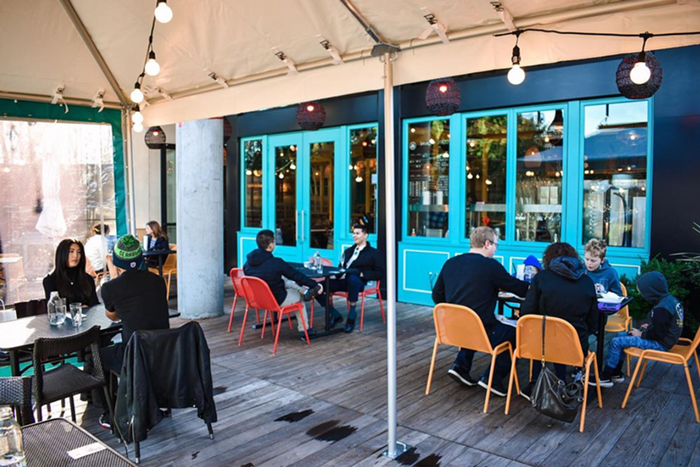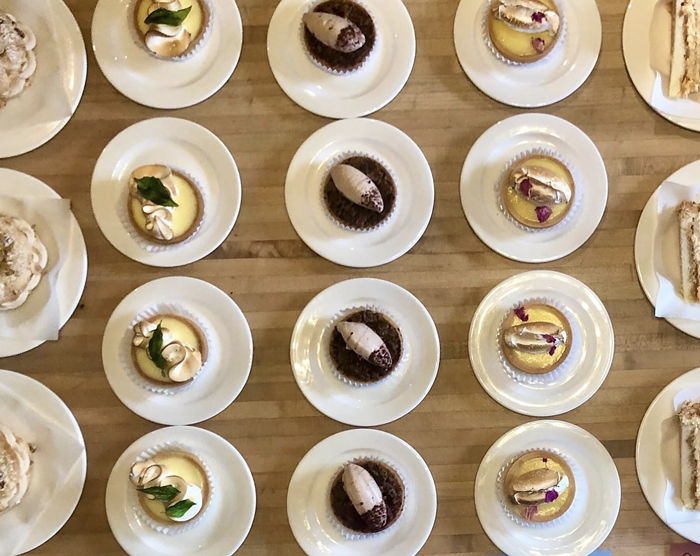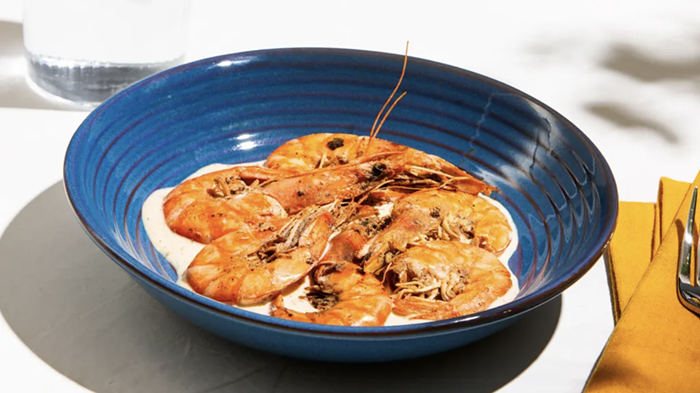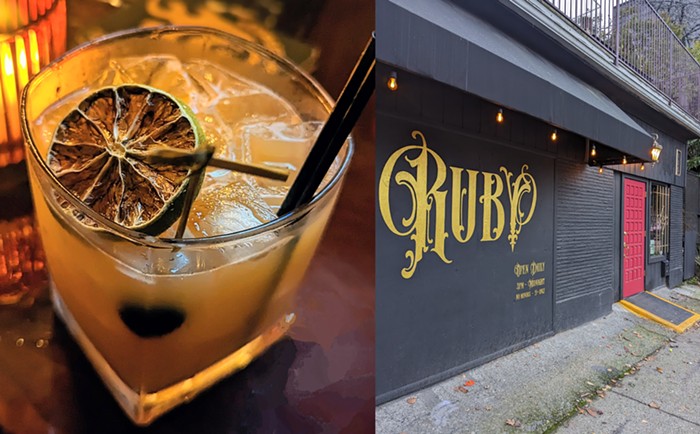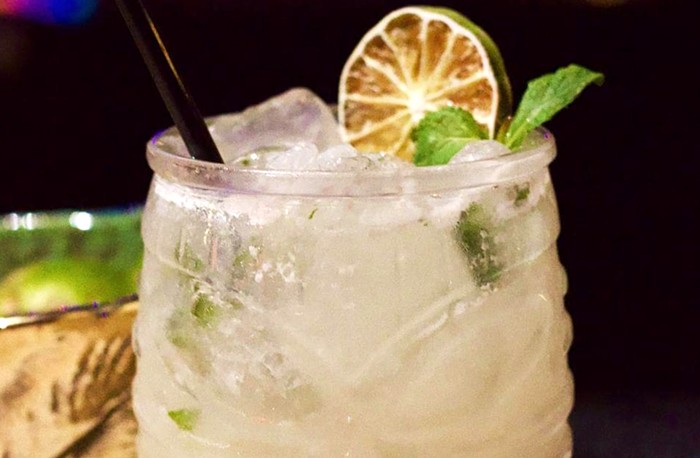There's been a spate of new Ethiopian restaurants opening along Seattle's "Little Eritrea" corridor of East Cherry Street between 12th Avenue and Martin Luther King Jr. Way. Old boats rising with this new tide include a couple of Central District standbys, Kokeb and Assimba. Kokeb, which closed the doors on its dingy hole in the wall on 23rd Avenue in 2003, has just reopened in a brand-new condo building on 12th Avenue across from Seattle University. Assimba, which for years has served up some of the best Ethiopian food in town from its hole in the wall on East Cherry Street, has been advertising its recent renovations, and has just reopened its doors to the public.
"It's like it's the new Thai food," comments my Ethiophile dining partner, as we discuss this trend of Ethiopian restaurants moving out of dingy wall holes into higher-end digs. The question that this upwardly mobile trend raises, of course, is whether the qualities that drew success in the first place can survive such moves and renovations. Or is there something about the dingy hole-in-the-wall experience that is inextricably woven into the flavor of fine Ethiopian food in Seattle?
One note about the menus and our ordering at Kokeb and Assimba: I've never understood why Ethiopian menus even bother to list dishes à la carte. At both restaurants, we ordered the mixed meat and veggie combos: a sampling of beef, lamb, chicken, lentils, cabbage, salad, and other assorted side dishes. Kokeb's came in at $31.90, and Assimba's at $24.
The first thing you notice about the new Kokeb is that you're sitting at the wrong height. ("Wrong," of course, is a culturally biased term loaded with expectations derived from my Western, hegemonic, patriarchal background and years spent sitting in racist chairs.) The reason you're sitting at the wrong height is Kokeb's choice to seat you around a traditional mesob, a woven straw-basket-like table that happens to be roughly four inches lower than a Western table. So all of the brand-new chairs at Kokeb have been sawn down roughly four inches, which puts your knees roughly four inches closer to your chin throughout the meal.
The second thing you notice about the new Kokeb is the injera. Injera is fermented and fried Ethiopian bread, a spongy pancake made from the flour derived from teff, a gluten-free grain native to northern Africa. An Ethiopian meal is generally spread out on a blanket of injera, and bites of the various dishes are picked up in small pieces of the torn bread. Traditional injera has a tangy, slightly tart and earthy flavor, an almost gelatinous texture, and a rich brown color. The injera at Kokeb, however, is white like a Pacific Northwest honky, made from bleached wheat flour and devoid of almost all flavor. Kokeb still makes traditional teff injera, too, served alongside the honky version, but just the existence of a white-bread injera—just the fact that there was a desire to create such a thing—sets the tone for the rest of the meal.
The new Kokeb somehow lacks the strong spicing that made its food taste so authentic in its original incarnation. Everything seems just a bit toned down, a bit subdued, a bit sanitized. The meats are juicy and tender, and the ubiquitous onions are fresh and sweet, but the strength of flavor, the heat of the berbere, and the richness, the earthiness, of the alecha is missing. This has to be intentional—chef and co-owner Yeshi Shiferaw has been cooking at Kokeb since its founding in 1982, and I refuse to believe that it's age that's mellowed her once-strong spicing hand.
The existence of the white-bread injera, the menu's invention of "Ethiopian French fries," the appearance of a Greek baklava with whipped cream as a dessert course... these are signs that point to a commercial choice to entice white American freshmen from across the street at the Seattle University dorms. Kokeb promises the public a "gentle introduction" to Ethiopian cuisine. But Kokeb should have more faith in white freshmen. Every middle-aged white hippie that supported the restaurant in its heavily spiced incarnation through the '80s and '90s was once a white college freshman, drawn in not by the bleached flour but by the teff; not by the salt and pepper but by the berbere; not by the baklava but by the yebeg tibs, the doro wat, and the zilzil alecha. Not, in short, by the familiar, but by the exotic, the alien, and the authentic.
Oh, and... really the last thing you want, after an hour-long eating orgy involving food that expands exponentially in your stomach (every bite involves a bite of bread), is to have your knees four inches closer to your chin.
Assimba recently held a grand reopening following extensive renovations. The renovations, apparently, took place primarily behind the scenes—the only changes we can see from the dining room are a new coat of paint and some new carpet, but a peek into the kitchen reveals gleaming new stainless-steel appliances arranged around a beautiful new prep area. The dining room is still decorated by the same old travel posters and oil paintings of a cross-eyed Haile Selassie, still oppressively lit by 10,000-watt bulbs.
And as our meal is served, we're relieved to see that the injera is still made from teff, the dishes are still spiced aggressively, there is still a richness, a smokiness, a complexity to the various dishes. Flavor, and by extension its root culture, is being embraced and demonstrated. This meal isn't trying to be a "gentle introduction" but rather a celebration of complexity.
At the end of our meal, we sample the house-made tea, an incredibly rich blend dominated by clove and cinnamon and including several spices that our waitress (who concocted that night's tea) can describe but can't translate.
"Describing without translating" is actually a wonderful theme for the meal at Assimba. Culturally specific restaurants (I'm looking at you, Kokeb) should worry less about translating their cuisine into standard American English and more about presenting their own flavors purely and simply. Too much, too often, gets lost in translation.
